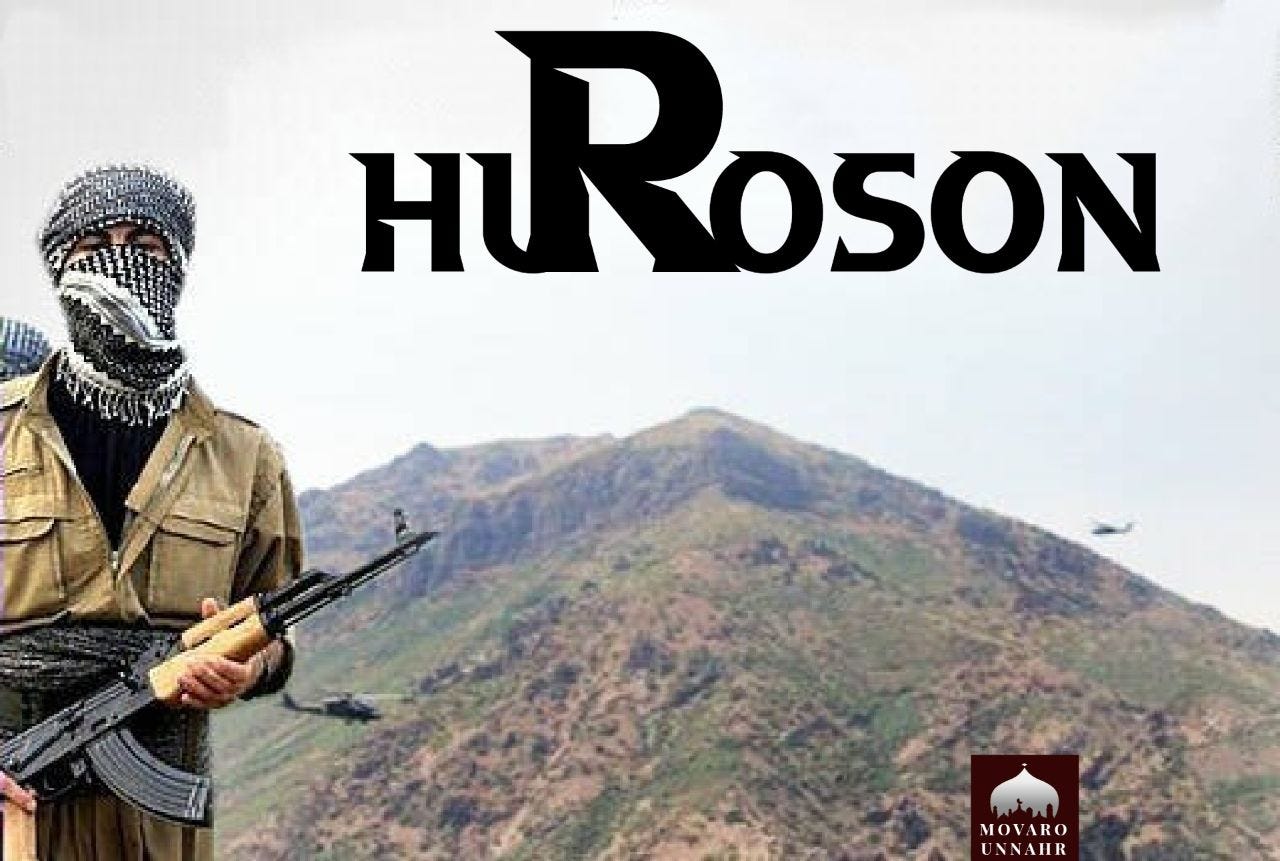The Islamic State Khurasan Province (ISKP) has markedly increased its focus on Central Asia in recent months, ultimately culminating in rocket attack operations targeting Uzbekistan in April and Tajikistan in May. Accordingly, ISKP-linked and aligned media groups have ramped up the production of materials in Tajik and Uzbek languages. The more Afghanistan-oriented elements have been on this trajectory for a while now, but the Middle East-facing networks are now paying discernibly greater attention to Khurasan Province. Perhaps the most notable example of this has been Movarounnahr, a propaganda outlet focused largely on Islamic State (IS) operations and history in Iraq/Syria.
Movarounnahr is a multifaceted entity that produces propaganda content in Tajik with accompanying Arabic translations and also runs a Turkish language channel. The group’s materials are widely shared throughout the online Central Asian language pro-Islamic State media and communications ecosystem.
‘Movarounnahr’ (also known as Transoxiana), means “that which (lies) beyond the river” and is an ancient name referring to a swath of Central Asia located between the Amu-Darya and Sur-Darya rivers. The historian Kamoludin Abdullaev describes Movarounnahr, together with Khurasan, as being “the historical homeland of the Tajiks.” Bruce Pannier, a journalist who has covered Central Asia for more than 25 years, told Militant Wire that this name “would seem to imply that the media outlet considers all [of this] land fair game for conquest.”
Although Movarounnahr is named after a geographical area of Central Asia and its media content is produced primarily in Tajik, the group is heavily focused on Middle Eastern affairs and influential actors involved in the region such as the United States and Russia. Its material emphasizes the plight of IS prisoners and their families in Syrian detention camps. Furthermore, Movarounnahr exalts the battlefield determination and religious devotion of Islamic State fighters in the area. Individual subjects of scorn include US Presidents Barack Obama and Donald Trump, Russian leader Vladimir Putin, and Syria’s Bashar al-Assad. Movarounnahr commonly depicts Islamic State attacks on American cities, the Vatican, and other Western targets. Additionally, the outlet reveres prominent Islamic State leadership figures martyred in Syria/Iraq such as former spokesman Abu Muhammad al-Adnani and Islamic scholar Turki al-Binali.
Movarounnahr is aggressively hostile towards Central Asian governments, particularly Tajikistan’s, and has produced images of Islamic State fighters executing Tajik President Emomali Rahmon, sieging the Palace of the Nation, and bombing monuments in Dushanbe’s Dusti Square. The group extols the deeds and legacies of Tajik Islamic State jihadis such as Gulmurod Khalimov, the former head of Tajikistan's special police force, who defected and joined the Islamic State in 2015.
Movarounnahr’s propagandists seem to be based in or descended from Central Asia as they use Tajik Cyrillic, a sign that their audience is mainly concentrated outside of Afghanistan. When the group publishes its statements, Arabic translations are included, further indicating Movarounnahr’s Central Asian and Middle East-focused orientation, yet some images do contain limited wording in the Latin alphabet.
In recent weeks, Movarounnahr seems to have increased its attention on Afghanistan and intensified its criticism of the Taliban. In addition to imagery and written statements, Movarounnahr has released audio lectures and videos about the Islamic State in Afghanistan. The network has been urging Tajiks to join and fight in the ranks of the Islamic State Khurasan Province against the new rulers in Kabul. One such message, published by a Movarounnahr channel on May 11, attributed to “Yusuf Tajik from the blessed land of Khurasan” asserted that “jihad is an obligatory duty”. The statement is quite notable because, if genuine, it indicates that through this supposed Tajik fighter, and possibly others, Movarounnahr has established some connection to and communication with ISKP. Moreover, their channels seldom share outside materials yet periodically post content from al-Azaim Media Foundation, which is ISKP’s official branch propaganda organ.
Another declaration, published in early May with an image of Tajikistan’s President being prepared for beheading in front of Dushanbe’s Ismoili Somoni monument, stated that the “Tajik tyrant … will be slaughtered” by the jihadis of Transoxiana and assured the “oppressed Mujahideen of Khurasan” and the “oppressed people of Tajikistan” that the Islamic State is ready to liberate said lands.
Movarounnahr has supported the Islamic State’s media warfare efforts against the Taliban by taking narratives purveyed by official IS central media and ISKP branch propaganda, paraphrasing them in Tajik, then presenting them with eye-catching visuals. They lump the Taliban in with other “hypocrites” such as Hayat Tahrir al-Sham, Pakistan, and Iran, while criticizing the Islamic Emirate of Afghanistan for their cordial associations with domestic Shia Muslim communities. Movarounnahr has also become quite critical of the Taliban’s foreign relations with Central Asian governments and other states.
Bruce Pannier believes this shift towards a greater focus on Khurasan “reflects a sense of new opportunity in Afghanistan and perhaps north of the Afghan border” given the “Taliban’s discrimination against minority groups in the north and general inability … to govern there.” He also notes that “the Middle East is deadlocked, but Afghanistan [is] still open to influence.” The recent rocket attacks targeting Uzbekistan and Tajikistan have seemingly also galvanized Tajik-speaking IS supporters.
Movarounnahr is just one media creation hub within an expansive global network of official and pro-Islamic State propaganda producers, but it plays an influential role in the IS-supporting Tajik-language communications space. The group acts as a kind of weathervane for the sentiments of Tajik-speaking Islamic State sympathizers. There is also a do-it-yourself aspect to Movarounnahr, as the outlet seeks to incite supporters to violence and advocates the importance of its audience using the Internet, messaging applications, and social media in furthering the Islamic State cause and rhetorically attacking IS’s enemies. Given recent trends of ISKP activity in northern Afghanistan and militant operations against neighbouring states in Central Asia, it will be worth observing if groups like Movarounnahr continue to devote more attention to Khurasan.





